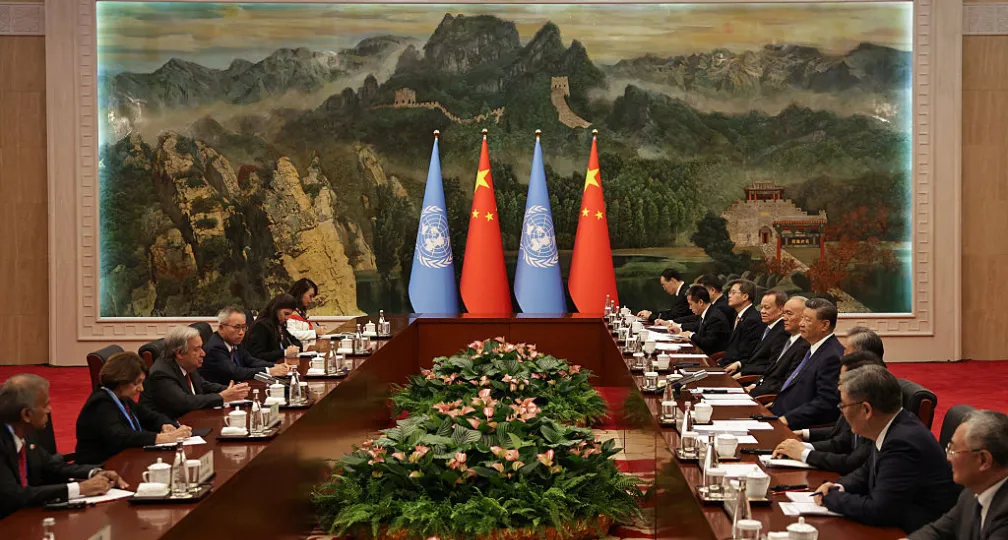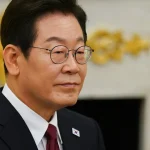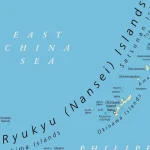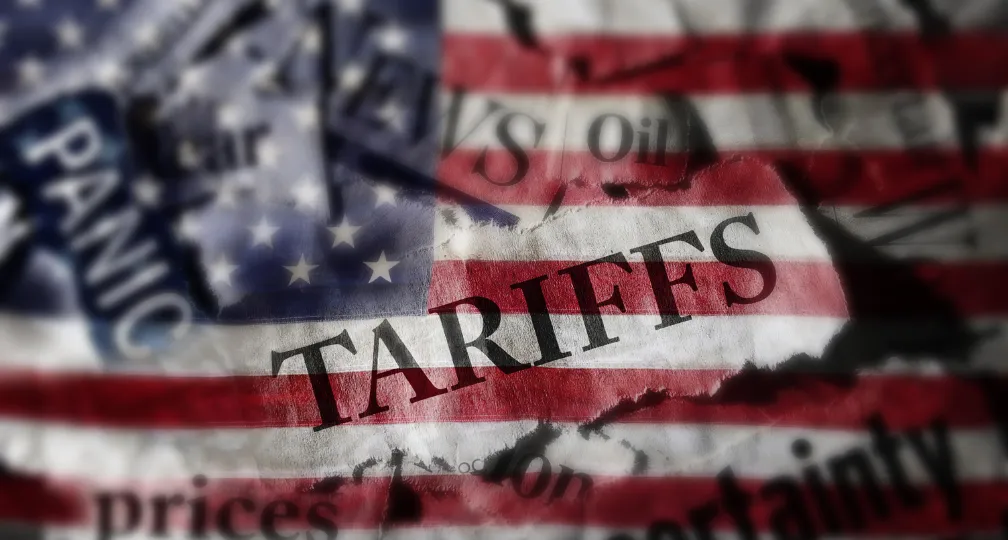IOG Economic Intelligence Report (Vol. 3 No. 13)
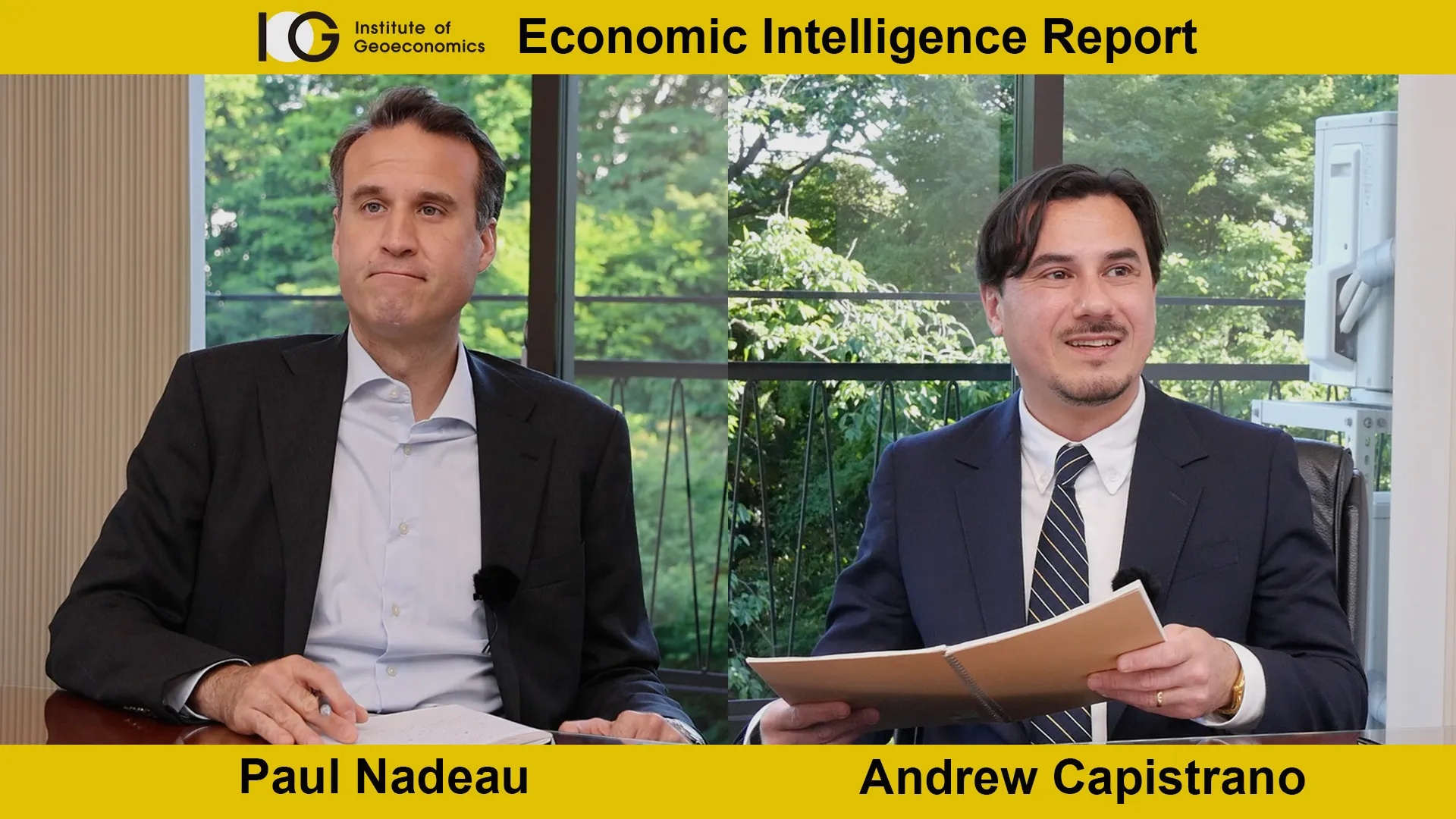
G7 Addresses Geoeconomics: Leaders of G7 economies pledged to confront China over its excess capacity while also asking Beijing not to restrict exports of critical minerals. The joint communique issued on June 14 following the G7 summit in Italy insist that the G7 states “are not decoupling or turning inwards,” but instead “de-risking and diversifying supply chains where necessary and appropriate, and fostering resilience to economic coercion”. The statement also called on World Trade Organization members to make the 26-year moratorium on against the collection of duties on e-commerce duties which is scheduled to expire in 2026.
The G7 also agreed to a $50 billion loan to Ukraine using frozen Russian assets which will begin to arrive at the end of the year and may be used for military support, humanitarian purposes, budgetary support, and reconstruction. Russian President Vladimir Putin described the move as a “theft” that “would not go unpunished”.
U.S. Gets Cabinet-Level Supply Chain Council: U.S. President Joe Biden issued an executive order on June 14 that formalizes the creation of a White House council on supply chain resilience, including cabinet secretaries and other agency heads. The council’s task will be to promote efforts to “strengthen long-term supply chain resilience and American industrial competitiveness; identify and provide a coordinated response to address supply chain insecurities, threats, and vulnerabilities, including excessive geographic or supplier concentration”. The council will also conduct a review of supply chains critical to economic or national security and issuing a report every four years, with the first report to be released no later than December 31. The report will include recommendations for federal incentives to attract and retain private sector investments, a strategic plan that includes diplomatic, economic, security, international development, trade and other policy actions to guide U.S. engagement with allies and partners, and reforms to domestic and international trade rules and agreements that could be pursued to support supply chain resilience, diversity, and security.
PADFA Goes into Effect: The Protecting Americans’ Data from Foreign Adversaries Act of 2024 (PADFA) went into effect on June 23 and enacts new restrictions on transfers of certain personally identifiable sensitive data to foreign adversary countries and entities controlled by a foreign adversary. Distinct from President Biden’s February 2024 executive order covering bulk data, PADFA expands the types of data protected from possible transfer to “countries of concern” (China, Iran, Russia, and North Korea).
Argentina in APEP? Argentina expressed interest in becoming the ninth country to participate in the Americas Partnership for Economic Prosperity (APEP), a framework to address economic, environmental, and social challenges analogous to the Indo-Pacific Economic Framework (IPEF) in the Indo-Pacific. While the pact does not include a formal application process, during the recent meeting of the Trade and Investment Council organized under the U.S. – Argentina Trade and Investment Framework Agreement (TIFA), the two countries “shared their ambition to deepen bilateral trade relations and noted the important role of bilateral engagement in diversifying regional supply chains for long-term, sustainable growth, including in key sectors such as critical minerals”. Discussions also covered agriculture, digital trade, artificial intelligence, cybersecurity, and privacy.
ITC to Launch Investigation of Solar Panel Imports from SE Asia: The U.S. International Trade Commission agreed to launch a preliminary investigation of injury to U.S. solar manufacturers possibly resulting from unfair trade practices by manufacturers in Southeast Asia. The decision came in response to a petition from U.S. solar manufacturers requesting antidumping and countervailing duty investigations of solar cells from Cambodia, Malaysia, Thailand, and Vietnam. Preliminary determinations for the countervailing duty investigation is expected on July 18 and preliminary determinations for the antidumping investigation are due on October 1, though dates may be extended.
Analysis: Echoes of the 80s
On May 14, the Biden administration announced tariffs on roughly $18 billion of goods from China, including 100 percent tariffs on all electric vehicle (EV) imports from China as well as tariffs on materials in the EV battery supply chain, including permanent magnets, lithium ion batteries, and critical minerals. The announcement of the tariffs attracted attention for their scale and for being the latest installment in the ongoing economic competition between the United States and China, but there’s another dimension that deserves attention as well – the use of Section 301 authority to apply these tariffs.
Section 301 of the Trade Act of 1974 gives the Office of the U.S. Trade Representative a set of authorities to investigate and respond to certain foreign trade practices. The legislation allows the United States to impose trade sanctions on economies that violate U.S. trade agreements or engage in acts that are “unjustifiable” or “unreasonable” and burden U.S. commerce. Far from being only a defensive mechanism that protects against unfair foreign trade practices, it can have offensive purposes as well, as those who remember Japan’s trade wars with the United States in the 1980s will know.
The current debates over China’s rise in Washington today have a direct ancestor in the debates over Japan’s rise in the 1980s. Where EVs from China cause angst amongst the Biden administration today, in the 1980s it was semiconductors from Japan that were creating anxiety in the Ronald Reagan administration. The decline of U.S. semiconductor production in the face of competing imports from Japan seemed to mirror U.S. technological leadership, not unlike current anxieties about needing to keep up with or overtake China on EV production. Given all the echoes of the past, it might follow that what seemed to work then may work again now.
It’s more complicated than that. For one, few if any of the people involved in drafting the order would have much professional memory of the trade wars with Japan, so turning towards a Section 301 solution to Chinese EVs reflects more the ongoing embrace of unilateral trade enforcement tools than a conscious or unconscious nostalgia for the 80s. But more importantly, the differences between the issue of semiconductors from Japan and EVs from China are significant and applying unilateral Section 301 remedies to the current issue risks shoving the fundamental issue of overproduction onto other markets.
In Japan’s case, the issue was market access, specifically that Japan’s semiconductors were taking more market share in the United States while U.S. firms could not do the same with Japan’s market. The reason that Japan’s semiconductors could gain market share was by driving down the price rather than flooding the market with oversupply. Dartmouth economist Douglas Irwin argues that Japan’s semiconductor industry could do so in large part to their firms’ connections with large banks that gave the banks equity ownership and corporate governance of these firms and therefore easier access to capital and a greater ability to weather downturns, while U.S. firms were relatively hindered by the high cost of capital and the appreciation of the U.S. dollar.
The issues with currency were resolved with the 1985 Plaza Accord which helped the dollar begin to depreciate. The Plaza Accord was soon followed by the United States using Section 301 authorities more aggressively, specifically toward South Korean restrictions on insurance firms, Brazilian restrictions on informatics, Japanese restrictions on foreign tobacco, and Japan’s export of semiconductors. Additionally, “Super 301” provisions, which required USTR to identify trade barriers and policy distortions in “priority countries” (named as Brazil, India, and Japan in 1989) were used by Congress as a way to pressure the Executive Branch on trade and to open foreign markets. It worked, sort of – the Section 301 investigation and possibility of countervailing duties put pressure on Japan to resolve the dispute before any duties were imposed, and in July 1986, Japan and the United States reached a five-year agreement to open Japan’s market and suspend the Section 301 cases, with Japan accepting that foreign semiconductors would make up 20 percent of its market, up from 8 percent.
But just six months later in January 1987, the United States demanded Japan demonstrate its compliance with the agreement in 60 days, and four months in April later the United States declared that Japan was noncompliant and imposed 100 percent tariffs on $300 million of electronics from Japan. The tariffs were partially lifted later that year once the Commerce Department determined that dumping had ceased and lifted entirely in 1991 once the foreign share of Japan’s semiconductor market reached the agreed 20 percent. While production migrated to Taiwan and South Korea, Japan’s semiconductor industry has never been the same.
The creation of the World Trade Organization (WTO) in 1995 and its dispute settlement mechanisms meant that the United States could now rely on multilateral WTO processes to push back against unfair trade practices rather than unilateral tools like Section 301. Since then, Section 301 provisions had primarily been used to launch investigations used to build cases that would then be brought to the WTO.
But beginning with the Trump administration – and now continuing with the Biden administration – the United States has used its Section 301 authorities to take unilateral action against foreign trade practices, rather than relying on WTO processes. The argument is that WTO procedures are too weak and time-consuming, while trade practices, specifically those from China, they argue, have created a situation that requires more urgent and direct action. USTR defended its use of Section 301 tariffs toward China in its Four Year Review released in coordination with the May 14 announcement, arguing that the use of Section 301 tariffs prompted more favorable conditions for foreign firms operating in China.
The problem with applying Section 301 to overcapacity is that it’s applying a unilateral solution to a global issue. The current EV case is an issue of overproduction reflecting China’s EV manufacturing capacity and domestic economic priorities. The case of the trade wars between Japan and the United States was a bilateral issue where a unilateral approach made sense, but overcapacity is a global issue, not a bilateral one. Section 301 tariffs may keep cars out of the United States, but the EVs still have to go somewhere, especially now that the European Union enacted its own tariffs on EV imports from China. Countries with their own burgeoning EV industries may soon find themselves facing their own flood of imports from China, undercutting their initiatives before they can even begin. On one hand, it might not be the worst thing to have cheaply-priced EV flooding world markets, but on the other hand, the world could also use more manufacturers in more places pushing forward more innovations to make the EV ecosystem more advanced.
As in the 1980s, a key driver of Section 301 is domestic political pressure and an administration determined to show that it’s taking the demands seriously. Its application might answer the domestic political problem But the global issue of overcapacity remains unaddressed and in need of a multilateral approach that doesn’t seem to be coming.


Visiting Research Fellow
Paul Nadeau is an adjunct assistant professor at Temple University's Japan campus, co-founder & editor of Tokyo Review, and an adjunct fellow with the Scholl Chair in International Business at the Center for Strategic and International Studies (CSIS). He was previously a private secretary with the Japanese Diet and as a member of the foreign affairs and trade staff of Senator Olympia Snowe. He holds a B.A. from the George Washington University, an M.A. in law and diplomacy from the Fletcher School at Tufts University, and a PhD from the University of Tokyo's Graduate School of Public Policy. His research focuses on the intersection of domestic and international politics, with specific focuses on political partisanship and international trade policy. His commentary has appeared on BBC News, New York Times, Nikkei Asian Review, Japan Times, and more.
View Profile-
 Is China Guardian of the ‘Postwar International Order’?2025.12.17
Is China Guardian of the ‘Postwar International Order’?2025.12.17 -
 Japan-India Defense in a Fragmenting Indo-Pacific2025.12.10
Japan-India Defense in a Fragmenting Indo-Pacific2025.12.10 -
 The “Economic Security is National Security” Strategy2025.12.09
The “Economic Security is National Security” Strategy2025.12.09 -
 India - Japan: The Glimpse of a Shared Vision2025.12.05
India - Japan: The Glimpse of a Shared Vision2025.12.05 -
 Beijing’s ‘Globalist’ Agenda Under Trump 2.02025.12.01
Beijing’s ‘Globalist’ Agenda Under Trump 2.02025.12.01
 Event Report: The Trump Tariffs and Their Impact on the Japanese Economy2025.11.25
Event Report: The Trump Tariffs and Their Impact on the Japanese Economy2025.11.25 The Real Significance of Trump’s Asia Trip2025.11.14
The Real Significance of Trump’s Asia Trip2025.11.14 The “Economic Security is National Security” Strategy2025.12.09
The “Economic Security is National Security” Strategy2025.12.09 The long road to a South Korea-U.S. trade deal2025.11.26
The long road to a South Korea-U.S. trade deal2025.11.26 The Tyranny of Geography: Okinawa in the era of great power competition2024.02.09
The Tyranny of Geography: Okinawa in the era of great power competition2024.02.09






